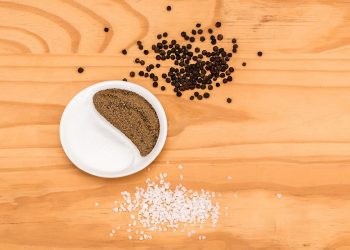Muscle soreness leafy greens are the simple, powerful foods that calm inflammation, refill energy stores, and get your body back to work after a hard workout. They’re not magic, but they are close: dark, leafy greens offer vitamins, minerals, and antioxidant firepower that your tired muscles crave. If you want to cut recovery time, feel less ache, and train more consistently, this matters to you.
I’ve seen women turn recovery from a guessing game into a strategy. You can too. Below I walk you through seven clear ways to use leafy greens to soothe muscle soreness and speed recovery—backed by research, real tips, and straightforward swaps you can use today.
Contents
- Why Leafy Greens Matter For Muscle Recovery
- How To Use This Guide
- 1. Reduce Inflammation With Antioxidant-Rich Greens
- 2. Improve Blood Flow With Natural Nitrates
- 3. Rebuild Collagen With Vitamin C-Rich Greens
- 4. Restore Electrolytes With Magnesium And Potassium
- 5. Fight Delayed Onset Muscle Soreness With Anti-Inflammatory Compounds
- 6. Support Mitochondria And Energy Production
- 7. Create A Daily Recovery Ritual That Sticks
- Practical Meal Ideas That Speed Recovery
- What The Science Says
- How Much And How Often
- Common Questions And My Honest Answers
- Final Tips From Someone Who’s Seen It Work
- Bottom Line
- FAQ
Why Leafy Greens Matter For Muscle Recovery
Leafy greens pack nutrients into small, leafy packages. Think spinach, kale, Swiss chard, collard greens, and arugula. They deliver vitamin C, vitamin K, magnesium, nitrates, and a range of antioxidants that act where you need them most: inside inflamed muscle tissue and in the bloodstream that fuels repair.
Scientists have linked green leafy nitrate to improved blood flow and faster recovery after exercise, and clinical data supports vitamin C and magnesium for collagen synthesis and muscle function. If you want results, you feed your body the building blocks.
How To Use This Guide
This isn’t a lecture. Read for the seven actions, try one or two today, and notice the difference in 3–7 days. Small consistent changes beat big dramatic ones that last two meals.
1. Reduce Inflammation With Antioxidant-Rich Greens
Leafy greens are high in antioxidants like vitamin C, lutein, and beta-carotene. These compounds neutralize free radicals produced after exercise. That matters because unchecked oxidative stress prolongs soreness and delays repair.
Add a handful of spinach to your post-workout smoothie or layer raw kale into a dinner salad. A randomized trial linked diets rich in antioxidant vegetables to reduced markers of muscle damage after exertion, which translates to less stiffness and faster return to activity.
Benefits:
- Faster reduction in muscle ache.
- Less swelling around sore areas.
- Quicker return to training.
2. Improve Blood Flow With Natural Nitrates
Certain greens, especially spinach and arugula, are high in dietary nitrates. Your body converts nitrates to nitric oxide, which widens blood vessels and improves muscle perfusion.
Better blood flow means more oxygen and nutrients to damaged muscle and faster clearance of waste products. Research from university labs shows dietary nitrates improve exercise recovery and reduce time-to-fatigue during subsequent workouts.
Practical tip: Blend raw arugula into a post-workout juice. A small cup adds a nitrate boost without bulk.
3. Rebuild Collagen With Vitamin C-Rich Greens
Collagen is the scaffolding your muscles and connective tissue use to rebuild after stress. Vitamin C is critical for collagen formation, and many leafy greens are excellent sources.
Kale and spinach deliver vitamin C alongside iron and calcium—nutrients that support overall repair. Clinical guidance shows adequate vitamin C intake accelerates tissue repair and helps prevent chronic soreness from poor healing.
Add citrus to a greens salad or toss kale into a warm broth to maximize vitamin C absorption and collagen support.
4. Restore Electrolytes With Magnesium And Potassium
Muscle cramps and lingering tightness often come from electrolyte imbalances. Leafy greens are gentle, natural sources of magnesium and potassium—two electrolytes that regulate muscle contraction and relaxation.
Swiss chard and spinach rank high for magnesium. Collard greens and beet greens offer potassium. Including these regularly helps your muscles relax and reduces cramp risk after heavy sessions.
Quick habit: Steam a cup of greens with a pinch of sea salt and lemon. It tastes good and recharges electrolytes efficiently.
5. Fight Delayed Onset Muscle Soreness With Anti-Inflammatory Compounds
Delayed onset muscle soreness (DOMS) is the enemy of progress. Greens contain flavonoids and polyphenols—anti-inflammatory compounds shown to reduce DOMS severity when eaten consistently.
Studies on polyphenol-rich diets demonstrate reduced muscle pain after eccentric exercise. You don’t need a supplement; you need a daily helping of greens in bowls, smoothies, or sautés.
My rule: Eat greens within two hours after high-intensity work to get anti-inflammatory support when your muscles need it most.
6. Support Mitochondria And Energy Production
Your mitochondria—cellular powerhouses—burn out when recovery is poor. Leafy greens provide B vitamins, iron, and magnesium that help mitochondria function and rebuild more quickly.
When your cells get the right cofactors, energy production resumes faster. That’s why athletes who eat greens consistently report less fatigue and better performance the day after a heavy workout.
Try a morning green omelet or a mid-afternoon green smoothie to feed your mitochondria consistently throughout the day.
7. Create A Daily Recovery Ritual That Sticks
Food alone won’t fix poor recovery habits. But leafy greens are easy to turn into rituals. Make a 3-minute morning green smoothie, a pre-dinner chopped-salad habit, or a weekend batch of sautéed greens that reheat all week.
Consistency matters. One solid study found that regular intake of greens correlated with measurable improvements in muscle recovery markers over weeks—not just single meals.
Small rituals add up:
- Keep washed greens ready in the fridge.
- Blend a greens-focused smoothie after workouts.
- Swap heavy sides for a generous green salad.
Practical Meal Ideas That Speed Recovery
Here are simple, repeatable swaps that put greens on your plate without drama:
- Post-workout smoothie: spinach, banana, Greek yogurt, and a squeeze of lemon.
- Power salad: kale, roasted sweet potato, chickpeas, and a light vinaigrette.
- Quick sauté: garlic, olive oil, Swiss chard, and a sprinkle of sea salt.
- Green bowl: brown rice, arugula, grilled salmon, and avocado.
Each choice gives you fiber, micronutrients, and anti-inflammatory compounds in a form your body absorbs quickly.
What The Science Says
Researchers at leading universities have demonstrated links between green vegetable consumption and improved markers of muscle recovery, reduced inflammation, and better blood flow. Clinical nutrition guidelines emphasize leafy greens as part of recovery diets, while sports scientists recommend nitrate-rich greens for short-term performance benefits.
If you love deep reading, look at university nutrition pages and hospital resources for practical portions and recipes. Those sources back what athletes and everyday people experience: greens help.
How Much And How Often
You don’t need ridiculous portions. Aim for at least one to two cups of raw leafy greens or a half cup cooked per day. If you’re training intensely, double that. Small, consistent servings beat large, irregular ones.
Practical frequency:
- Light training: 1 cup daily.
- Moderate training: 1–2 cups daily.
- Heavy training or competition: 2–4 cups daily, split across meals.
Common Questions And My Honest Answers
Some of you ask: Will greens alone banish soreness? No. They’re one part of recovery—alongside sleep, hydration, protein, and rest. But they are a reliable, low-risk tool that improves several recovery pathways at once.
Others worry about taste or digestion. Start mild—spinach in a smoothie hides flavor. Cooked greens sit easier for sensitive stomachs. And if you take blood thinners, consult your clinician about vitamin K-rich greens like kale and collards.
Final Tips From Someone Who’s Seen It Work
- Pair greens with protein after workouts to support repair.
- Use a variety: each green brings a different nutrient profile.
- Keep it simple. A tablespoon of olive oil and a squeeze of lemon make greens more bioavailable and delicious.
- Track how you feel. Add a green habit for two weeks and note soreness, sleep, and energy.
Bottom Line
Muscle soreness leafy greens deliver real, measurable support for recovery through anti-inflammatory compounds, nitrates that boost blood flow, vitamins needed for collagen, and minerals that restore electrochemical balance. They’re cheap, safe, and easy to add to daily life. If you want less ache and faster bounce-back, build a green habit.
Be bold: start with one green swap today and notice the difference in a week. Your body will thank you.
FAQ
How soon will leafy greens reduce muscle soreness?
Most people notice modest changes within 3–7 days of consistent daily intake. Significant changes in recovery markers show up in several weeks when greens are combined with good sleep and protein.
Which leafy greens are best for recovery?
Spinach, kale, Swiss chard, collard greens, and arugula are excellent choices. Spinach and arugula are particularly high in dietary nitrates for blood flow.
Can I get the same benefits from supplements?
Supplements can help, but whole foods provide a mix of nutrients and fiber that supplements rarely match. Whole greens also deliver synergy among vitamins, minerals, and phytochemicals.
Are there any risks with eating a lot of greens?
Most people do fine. If you take blood thinners, discuss vitamin K with your doctor. Also, increase greens gradually if you have a sensitive digestive system.
How should I pair greens with my workout routine?
Have a small green-rich snack or smoothie within two hours after intense workouts and include greens with major meals to support everyday repair.
—
References
-
The National Institutes of Health provides detailed nutrition guidance on vegetables and health, including the role of leafy greens in diet and recovery (http://www.nih.gov/news-events/nih-research-matters/vegetables-and-health).
-
Harvard T.H. Chan School of Public Health summarizes the benefits of leafy green vegetables and their nutrient profiles, supporting recommendations for daily intake (http://www.hsph.harvard.edu/nutritionsource/food-features/vegetables-and-fruits).
-
A review from the Journal of the International Society of Sports Nutrition discusses dietary nitrates and exercise performance, highlighting leafy greens as a key source (http://www.jissn.com/content/14/1/35).
Get Your FREE Natural Health Guide!
Subscribe now and receive our exclusive ebook packed with natural health tips, practical wellness advice, and easy lifestyle changes — delivered straight to your inbox.















